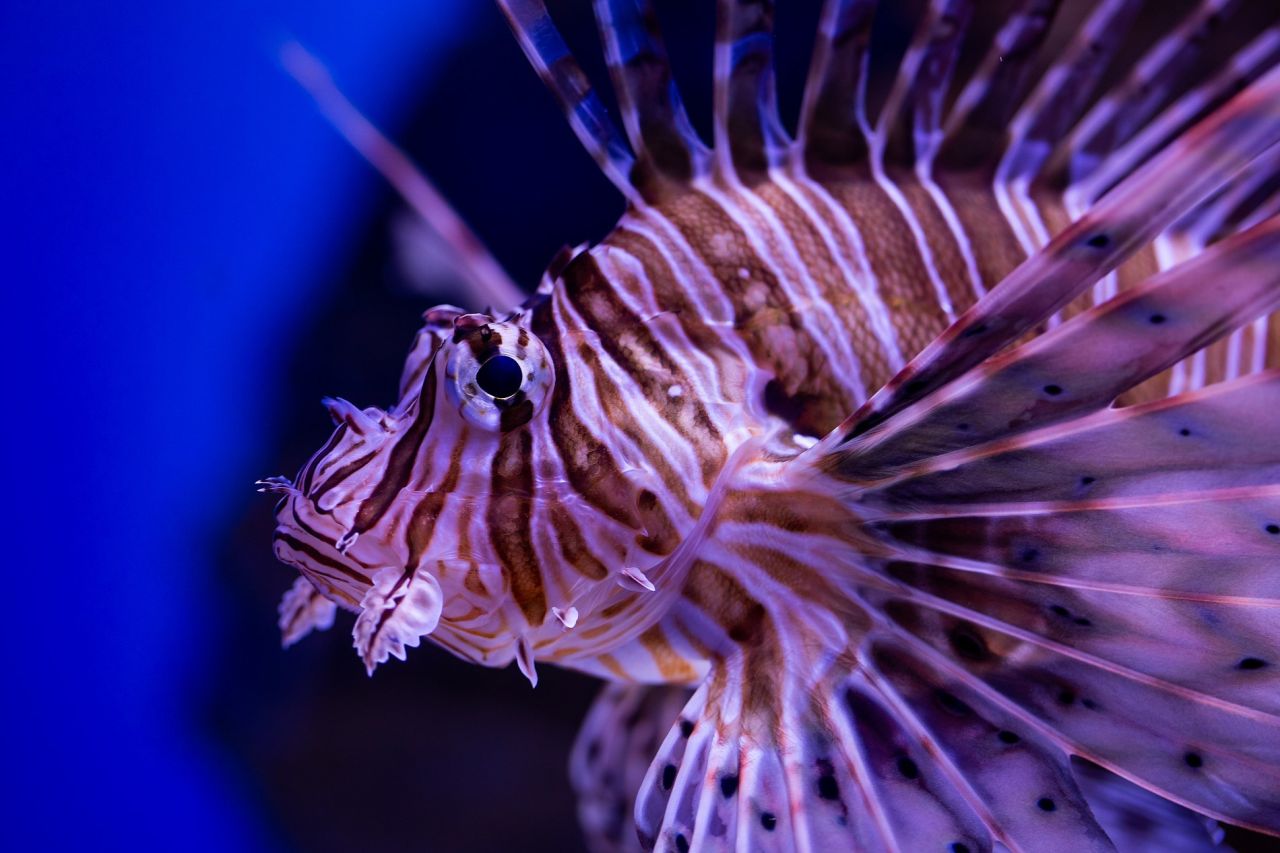Meet the devil firefish, also known as the lionfish. Its scientific binomial name Pterois miles translates to "feathered soldier", which we think is a perfect name for a fish, which is easily recognisable for its venomous, spiny fins. You've probably seen them in our Skretting Diversity Gallery!

These venomous spines serve as protection, making it difficult for predators to eat the devil firefish. The toxins are a very strong deterrent and are able to cause severe illness and even death to large animals, even humans, that are stung. That said, the devil firefish is non-aggressive, so incidents like this are rare, with firefish preferring to simply hide and wait for darkness before swimming about.

Where are they from?
The devil firefish occurs naturally throughout the Indian Ocean. It ranges from South Africa, along East Africa to the Red Sea, and along the coast of southern Asia to India and Indonesia. As a result of the Lessepian Migration (the merging of Red Sea and Mediterranean ecosystems as a result of the construction of the Suez Canal), devil firefish are also present around Turkey, Cyprus and Greece. Known as "lionfish" internationally, devil firefish that have been discarded from home aquariums have become established as an invasive species in the Caribbean Sea too.
A quick note on "invasive species" - the lionfish gets a bad rep because of its presence in some parts of the world where it is a harmful, invasive species. It's important to remember that every single invasive alien species is a natural part of an ecosystem somewhere else, and lionfish are a perfectly natural part of our coastal ecosystem here in South Africa. Please keep in mind that information you see online might be biased towards American and British ecosystems, as these are the English-speaking nations with the largest online presence.

Predator and prey
Although it is a predator, the devil firefish also falls prey to a number of other, larger fish that have learned feeding techniques to bypass its venomous spines. These predators include moray eels, groupers, and several shark species - even groupers in the Caribbean Sea that are not natural predators of the devil firefish (or anything like it) are learning new hunting strategies to eat it.
The nocturnal firefish is an ambush predator and uses the cover of darkness to eat other small fish (even other firefish) and small crustaceans. It uses the cover of darkness to get close, and then swallows its prey whole with a quick sucking motion! Its long, spiny fins might be beautiful, but they are not well-suited for sustained swimming, so the devil firefish cannot chase prey, it can only put on a single short burst of speed.

When young, the firefish is not as adept at hunting, so needs to lure prey closer to its mouth before striking. It uses small tassels on its chin and "eyebrows" to entice prey closer. As it gets older, it no longer needs these tassels and they stop growing back, so are often absent in adult devil firefish. Interestingly, adult firefish that are raised in aquariums (like ours) never lose their tassels, because they never need to use them as lures!


